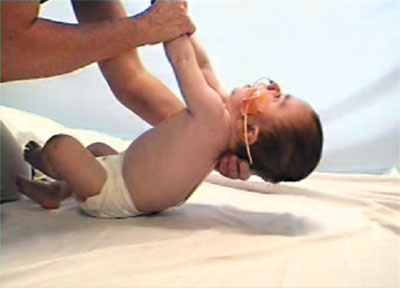Pathophysiology of Pompe’s disease – it is also referred to as GAA deficiency. It is the result of a mutation in the gene that makes the enzyme alpha-glucosidase (GAA) and prevents the breakdown of glycogen. There is a buildup of lysosomal glycogen in the body’s cells and accumulation in tissues of the heart and skeletal muscles. Infants with this disorder experiences poor muscle tone, weakness, an enlarged liver, heart defects, breathing problems and enlarged tongues. Most babies die within a year. The non-classic form appears at age one which has symptoms of delayed motor skills, muscle weakness and an abnormal, large heart. If diagnosed at a later age the symptoms are milder and do not involve the heart. They however experiences muscle weakness in the legs and difficult breathing which could lead to respiratory failure.
Infants with rapidly progressive Pompe disease have muscle weakness which is shown by the characteristic head lag and frog-like posture of the legs.
A family with the two younger children suffering from Pompe’s Disease:
References:
http://www.unitedpompe.com/aboutpompe.cfm
http://quest.mda.org/article/heroes-hope-hollywood





